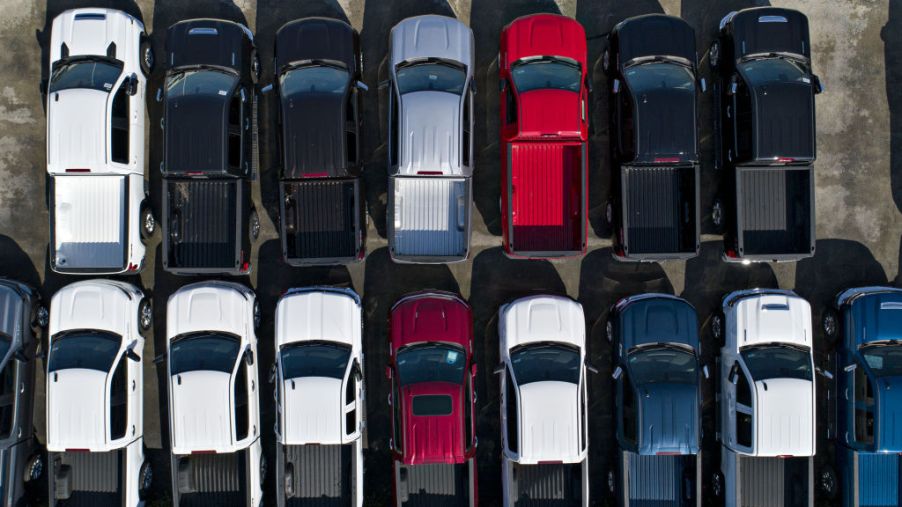
Why Are Pickup Trucks so Expensive?
If you’re in the market for a new truck, you’ve likely experienced sticker shock. New trucks are increasingly expensive and can cost as much as $100,000. To make an informed purchase, you’ll need to understand what drives up the price. Then you can determine which extras, if any, are worth it.
Common truck price points
Pickup trucks are available in all sorts of sizes and configurations, but there are a few common categories:
- Heavy duty: Heavy-duty trucks come with impressive towing and payload limits yet they can still carry passengers comfortably. These trucks start at $35,000 but some, like the Ford F-450, can top $100,000.
- Full-size: For many, the full-size truck category is the Goldilocks of trucks. They have great towing and hauling capacities but aren’t as expensive or big as heavy-duty trucks. Full-size models start at $30,000 but cost as much as $80,000. The Ford F-150 Raptor is one of the more expensive trucks in this category.
- Midsize: Midsize trucks are smaller, with lower payload and towing capacities. This makes them easier to handle. These trucks have the lowest price point, starting at $20,000 and going up to $60,000. The Jeep Gladiator is on the high end for midsize truck models.
Reasons for the high price tags
Modern pickup trucks come with many features that up the cost. Thankfully, competition in the truck market is stiff, so you’ll likely be able to take advantage of a sale or negotiate the sticker price. The following components all play a factor in the price of a truck.
Technology
Historically, trucks did not come packed with technology. These days, however, technological bells and whistles get added with every new truck model. Current truck models often include:
- Massage seats
- Heated seats and steering wheels
- 12-inch screens
- HVAC systems
- Upgraded stereos
- Fancy lighting systems
- Cameras throughout the truck
In some instances, added technology can provide extra safety. For example, cameras give drivers helpful views when driving such a large vehicle, including views of towing regions. Other additions, like heated seats, are purely for comfort.
Many technological add-ons come as part of a package, so you aren’t able to pick and choose a la carte. This means you may need to opt for an expensive package to get the upgrades you desire.
Safety additions
As trucks get larger and safety requirements get stricter, manufacturers continue to optimize safety features. While they vary depending on the model, trucks often include:
- Blind-spot monitoring
- Sensors for detecting other vehicles
- Trailer monitoring
- Adaptive cruise control
- Guided parking
- Lane departure warning
These safety features may not be required, but they assist drivers and keep passengers safe. If you’re comfortable driving a large vehicle, you may want to forego many of these expensive additions.
Fuel efficiency
Due to more stringent emission standards and consumer demand, trucks now focus on gas efficiency. Automakers have invested in turbocharged motors, like the one in the Chevrolet Silverado 1500. There are also turbo-diesel options and hybrids. Opting for a fuel-efficient truck will ramp up the cost.
Do people really need souped-up trucks and extra features? That’s for the consumers to decide. If they continue to invest in high-priced trucks with all the features, you can expect to see more innovations — accompanied by higher costs.


